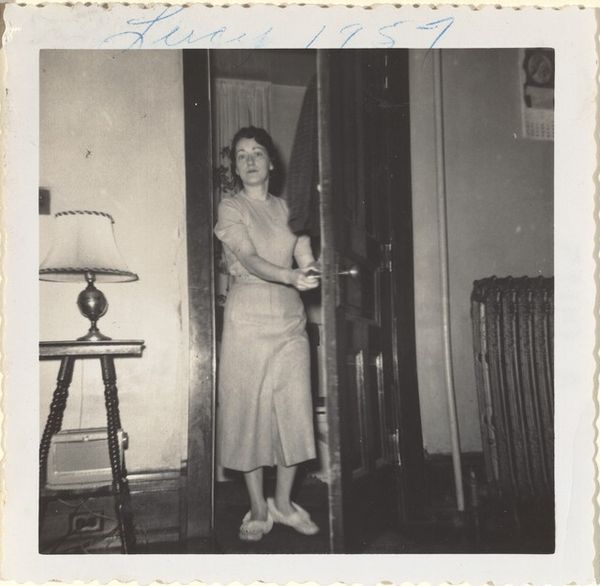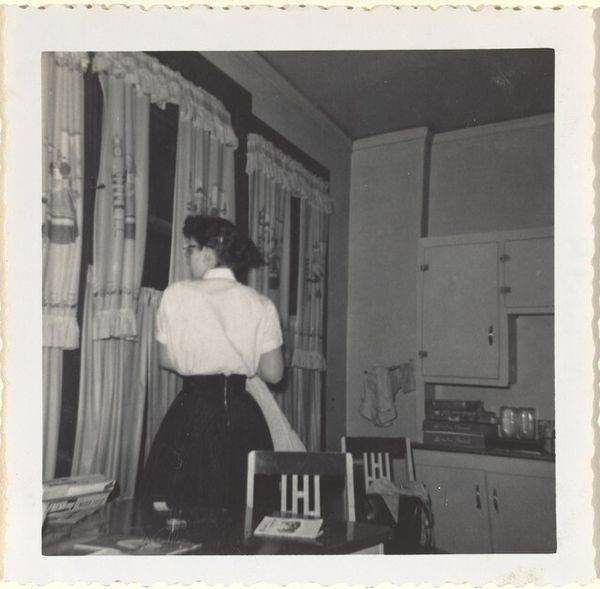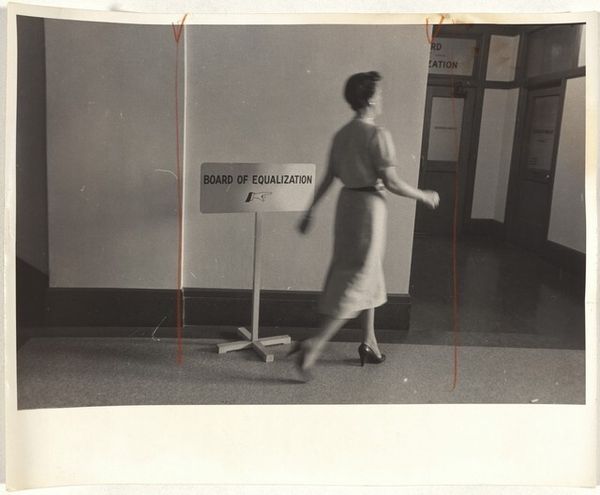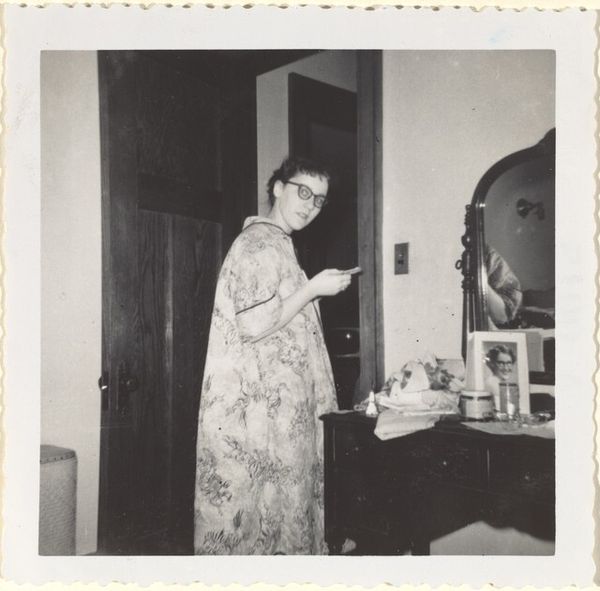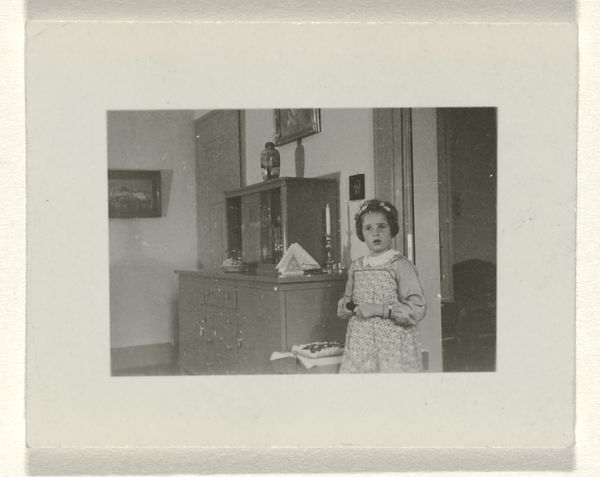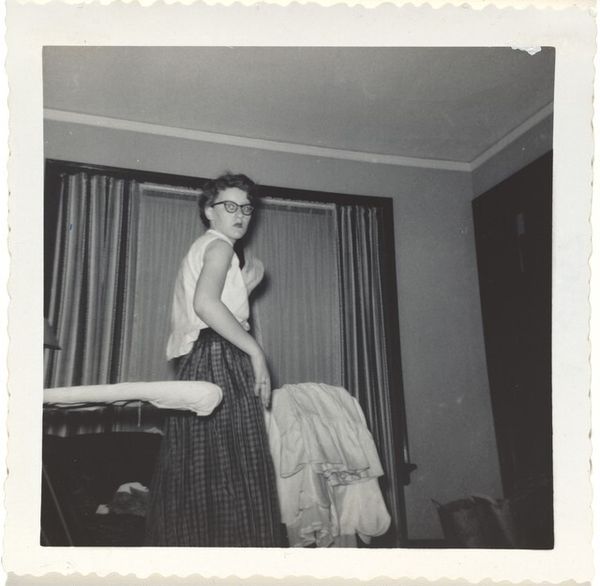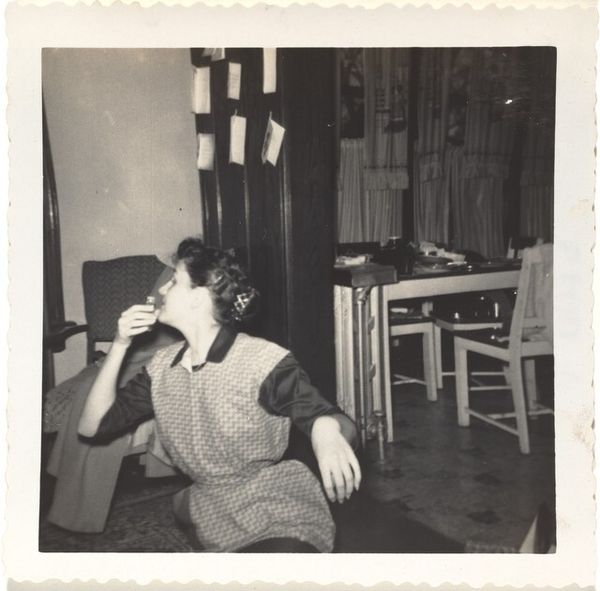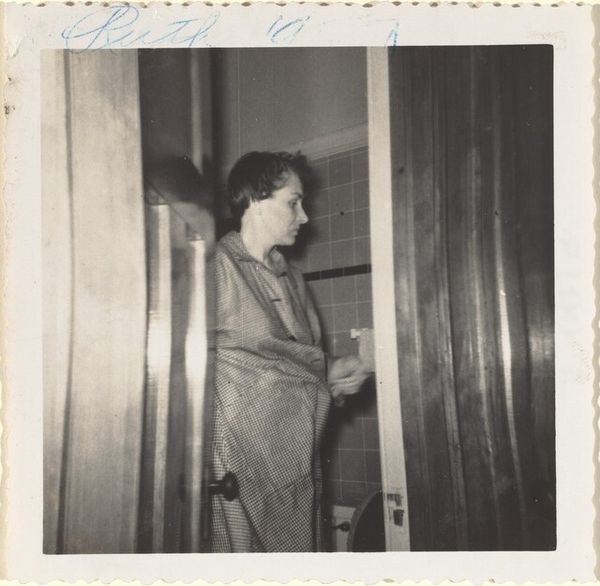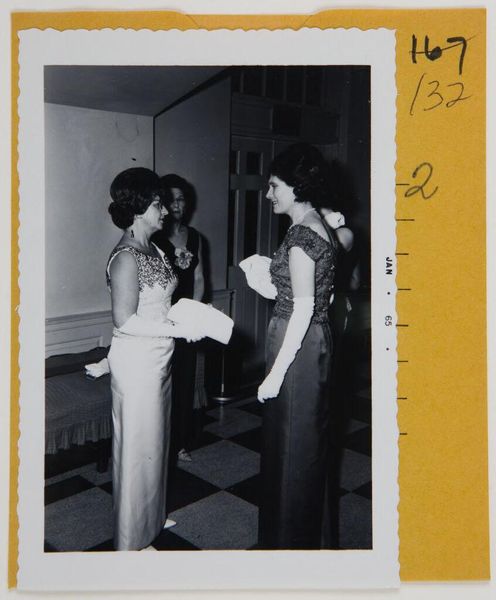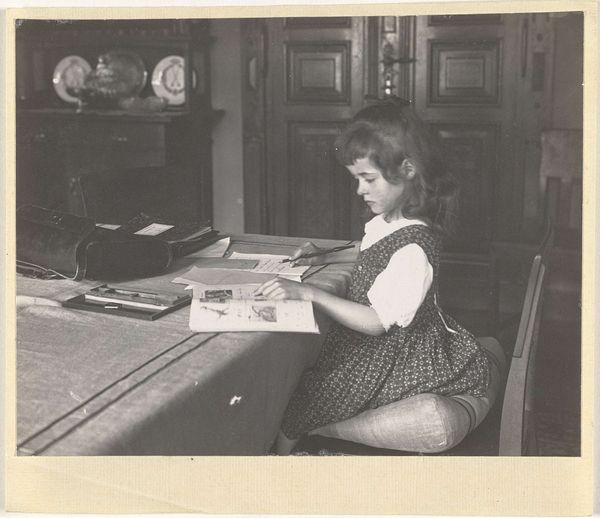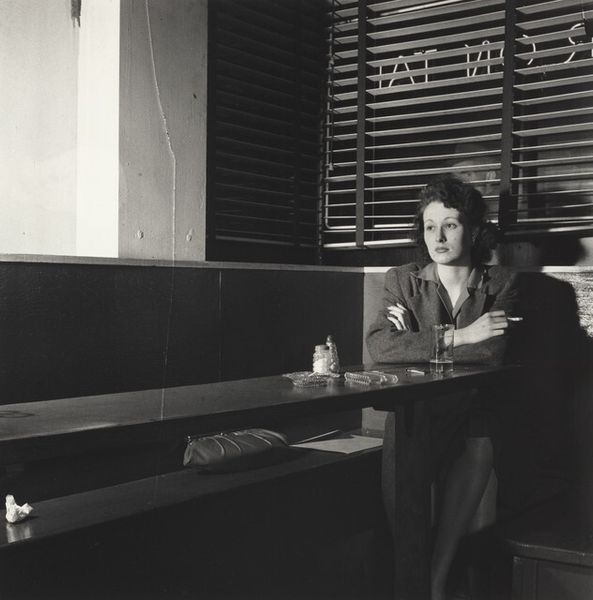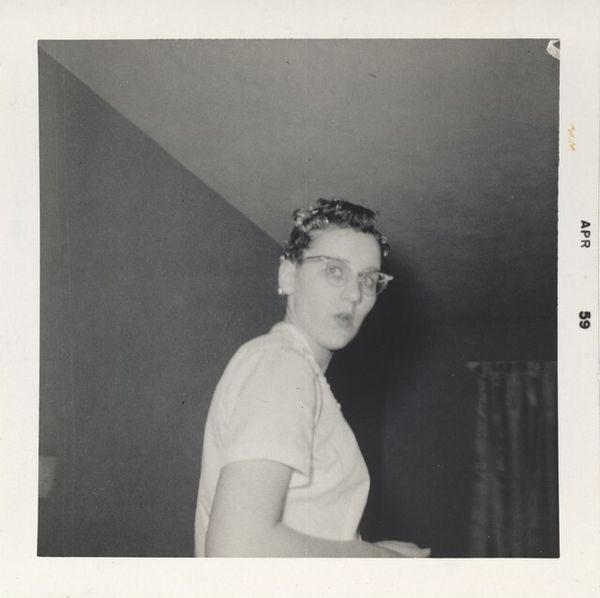
photography, gelatin-silver-print
#
portrait
#
photography
#
gelatin-silver-print
#
genre-painting
#
modernism
Dimensions: image: 7.5 x 7.6 cm (2 15/16 x 3 in.) sheet: 8.9 x 7.6 cm (3 1/2 x 3 in.)
Copyright: National Gallery of Art: CC0 1.0
Editor: This gelatin-silver print, titled "Me", was taken around the late 1950s. There’s something so classic and understated about it; the woman seems caught in a private moment. What symbols do you see here, and how do you interpret this ordinary scene? Curator: Well, the photograph itself is an icon, really. Consider the rotary phone, an almost obsolete object representing a very specific era and mode of communication. It's not just a phone; it evokes the mid-20th century, mid-century aesthetics and perhaps even associated feelings of longing or nostalgia linked with telecommunication of the time. And look at those filing cabinets – banks of information. The woman, we can presume, has intimate knowledge of all that the drawers hold. Editor: That's a good point. I didn't really focus on the phone itself. The woman is at work, and the phone might simply indicate being at an office. But I suppose the contrast to modern mobile technology carries quite the emotional load! Curator: Exactly. And what about the subject's attire, her hair, her pose? These also operate as symbols pointing to an age where female identity in the workplace carried a certain cultural expectation of style, decorum, and perhaps even aspiration. Does her posture suggest engagement or perhaps weariness? Editor: Weariness, possibly? Though it's hard to know. It feels like an intentional glimpse into a very specific experience. Thanks; I will keep an eye out for those symbolic values in similar images! Curator: And always consider how our understanding and emotional connection to these symbols change over time, reshaping the artwork's meaning with each viewing. That is the beauty of iconography!
Comments
No comments
Be the first to comment and join the conversation on the ultimate creative platform.
